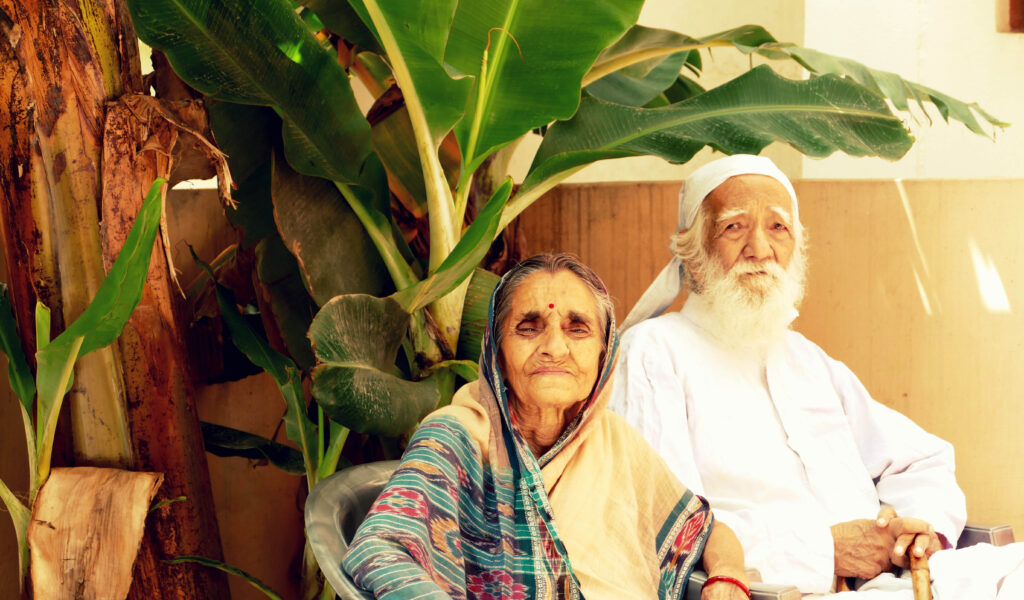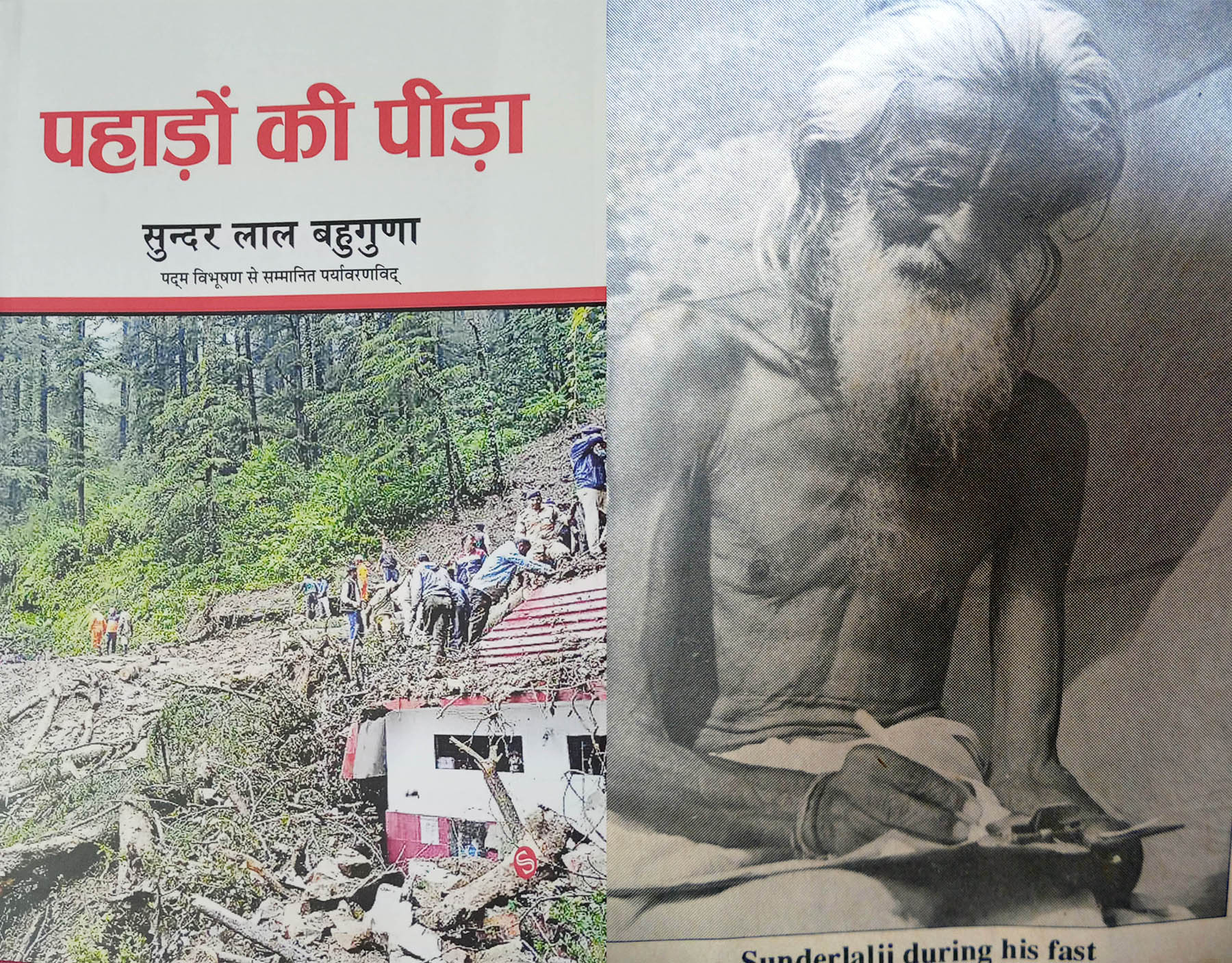Sunderlal Bahuguna, the person most closely associated with the movements and campaigns to protect Himalayan forests, had travelled to more Himalayan villages than perhaps anyone else and was involved in many grassroots struggles here. He applied Gandhian precepts, to which he was devoted all his life, to understanding and resolving problems of Himalayan villages and region. It was on this basis that he developed an alternative vision for the sustainable development of the Himalayan region placing the highest emphasis on environment protection and the special local conditions of the region.
When he breathed his last some time back, homages poured in from far and wide including the state and the national government. However when I visited his wife Vimla Bahuguna and daughter Madhu Pathak soon after this, they emphasized that what is most important is to honor his ideas and vision. Since then they have continued to work for this cause and their most recent effort is in the form of the book being discussed here. Titled ‘Paharon ki Peera’ (The Agony of the Mountains) this Hindi book containing 43 essays, memoirs and articles of Sunderlal Ji reminds us of the unique writing skills and style rooted in his unending travels ( including very long foot marches all over the vast Himalayan region) and struggles. In her introduction Madhu Pathak has acknowledged the help and encouragement she received from her mother Vimla and from her husband Dr.Bhuvan Chandra Pathak. Kumar Prashant has written an engaging foreword.
This book has Sundrlal Bahuguna’s writing on environment and forests, several pages of his diary, his recollections of various struggles, biographical sketches of great inspirational persons with whom he worked ( including Sridev Suman, Sarla Behan and Mira Behan, as well his observations on various issues of interest and importance. Parts of the book bring back vivid memories of the numerous campaigns and struggles with which he was associated.
The veteran environmentalist and Chipko ( hug the trees movement) activist was also a freedom fighter and regarded Mahatma Gandhi as his most prominent teacher and mentor. He devoted his life to applying principles of non-violent struggles in the context of increasingly important tasks of protecting forests and rivers.
Along with his wife Vimla ( who was more formally trained in Gandhian principles and methods by Sarla Behan, the famous European disciple of Gandhi) , several deeply committed Gandhian activists and villagers of Garhwal region of Western Himalayas he was involved in many struggles to protect trees marked for felling and to prevent the construction of gigantic dams widely exposed for their serious risks and hazards by senior scientists and experts.
Born in a village along the bank of the Ganges river in Tehri Garhwal , as a schoolboy he met Sridev Suman , a famous freedom fighter who later sacrificed his life during a jail sentence, and decided to follow his example of a deeply committed social life.
After independence Sunderlal and Vimla settled in the remote village of Silyara to serve the villagers of surrounding areas, leading an austere life.
Following the Chinese invasion leading Gandhian Vinoba Bhave called upon Gandhian social workers in the Himalayan region to play a wider social role and so now Sunderlal started travelling more widely in many parts of Uttarakhand, particularly the Garhwal part. This led to increasing involvement with social and environmental concerns.
Both Sunderlal and Vimla were involved in anti-liquor movements and rights assertion movements of weakest sections which challenged various forms of discriminatory practices. Enduring relationships were established with several younger activists like those in Henvalghati region.
Around the late seventies a series of Chipko movement activities centered in Henvalghati region were launched for saving forests like those of Advani and Salet which generated a lot of enthusiasm. The action shifted then to even more remote forests like those of Badiyargad, where Sunderlal Bahuguna went on a long fast in a dense forest area in very difficult conditions and Vimla also followed him there. During a visit to this region to report on this movement, I learnt that Madhu, brave daughter of brave parents, had also plunged into a forest closer to Silyara Ashram to protect the trees being felled there.
Side by side Sunderlal maintained a dialogue with senior persons in the government. The then prime minister Mrs. Indira Gandhi in particular had very high respect for him. Very big success was achieved as the government agreed to stop the green felling of trees in a vast Himalayan area.

Following this success Sunderlal went on a very long and difficult march from Kashmir to Kohima, including Bhutan and Nepal, covering a vast part of the Himalayan region to spread the message of saving forests and environment with the involvement of people. During this march, taken up in several stages, several times he faced threat to life but did not stop and completed the march. This march helped him greatly to known the conditions of people and environment in the Himalayan region to a much wider extent.
He emphasized protection of sustainable livelihoods along with protection of environment. He was involved closely in resisting displacement and organizing forest workers. He was also involved in several constructive activities relating to regeneration of degraded forests.
Soon he was in the thick of the movement for opposing the harmful social and environmental aspects of dam projects in Himalayan region particularly the gigantic and highly controversial Tehri dam project, which was described as a project of unacceptably high hazards even by officially constituted committees. This proved to be a very long and difficult struggle. Sunderlal Bahuguna left his ashram in Silyara and camped on the bank of the Ganges river for a very long time, accompanied by Vimla.
Although this long struggle did not succeed in stopping the high-risk dam, it certainly helped to spread awareness of these important issues far and wide.
Sunderlal Bahuguna became an inspiration source for forest protection and environmental struggles in many parts of India and even abroad. In the Western Ghats region, for instance, he was an important inspiration source for the great Appiko movement for saving forests. He visited the region and this proved to be an important turning point in the mobilization for the movement.
He was honored with several prestigious awards, including the Padma Vibhushan.
He contributed to many constructive causes such as the Bhoodan (gift of land) movement for making available some farmland to landless rural households.
He played a very important role in evolving an alternative development strategy for the Himalayan region rooted in a combination of combining environment protection with sustainable livelihoods.
Some more information on the book (in Hindi)—Paharo ki Peera by Sunderlal Bahuguna ( Selected writings compiled and edited by Madhu Pathak), 266 pages, Price INR 350, Paperback, Published by Samay Sakshay, 15 Faltu Line , Dehradun—248001, India.
The writer is Honorary Convener, Campaign to Save Earth Now. His recent books include Vimla and Sunderlal Bahuguna—Chipko Movement and the Struggle Against Tehri Dam Project, Man over Machine-A Path to Peace, Planet in Peril and A Day in 2071.

